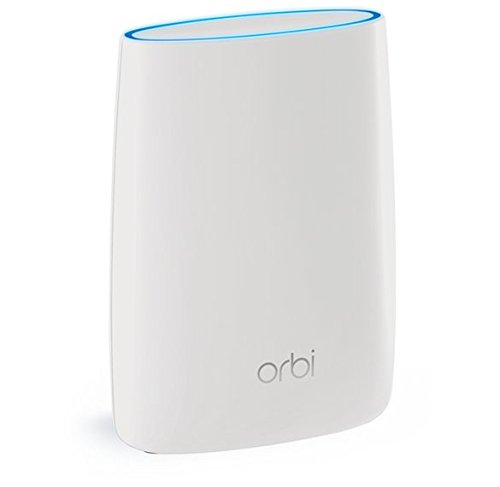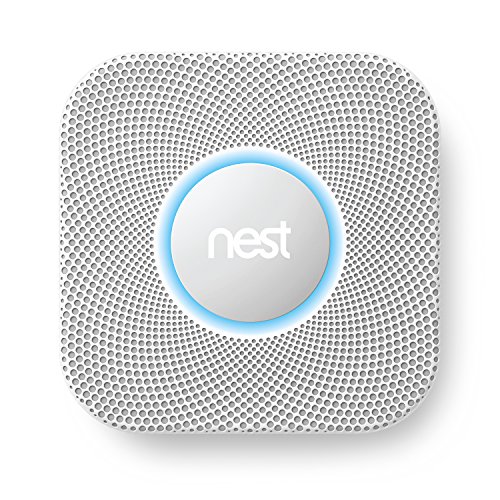With all the new wireless devices living in your home, the time was ripe for an 'Apple-fication' of wireless routers which previously competed based the latest WI-FI standards and price. For a while, these WI-FI routers looked a lot like the PC's of old, requiring a level of technical sophistication to set up and use and heavily commoditized.
All this has changed with the new mesh WI-FI networking routers from Eero and Luma, as well as the Google driven Asus OnHub and the TP-LINK OnHub routers. At a local Best Buy store, we could see many of these new style WI-FI routers on display.
In general, we liked the concept of mesh networking where every wireless access point becomes its own local router redirecting packets to where they need to go. Mesh networking can help increase wireless coverage and redundancy in case one of your routers goes down. However, nothing comes for free and mesh networking tends to involve more latencies and delays if your data packets need to hop over several routers on its way to the Internet. In the end, despite the ease of use and great styling of the Eero and Luma products, we just weren't ready quite yet to sacrifice data throughput for better wireless coverage.
We were also very tempted to go for Google's OnHub products given it's one of the few wireless routers out there that also supports 802.15.4 which in the future could support new low power mesh networking technologies like Thread which enables various IoT protocols like Google's Weave and OCF's Iotivity. Initially, we were hoping to connect the Asus OnHub with our Nest Protect units using Weave. Unfortunately, despite the Nest and OnHub products both having 802.15.4 radios, Weave had not yet been implemented on the OnHub and can't be used to communicate with the Nest Protect.
Having been impressed at how NETGEAR has really improved the user experience of its products with the Arlo (click here to see review), we were fortunately to see that the Fry's Electronics in Fremont, California had just stocked the NETGEAR Orbi and that we were the first buyer (at least that's what the Fry's salesperson told us).
What convinced us to purchase the NETGEAR Orbi was that we didn't want to sacrifice speed while getting some level of mesh networking advantages.
The NETGEAR Orbi supports AC3000 compared to the AC1900 supported by OnHub routers and is also faster than the Eero and Luma products. With AC3000, the NETGEAR Orbi combines bandwidth from three bands- 400 Mb/s from 2.4GHz, and 866 Mb/s + 1733 Mb/s from two 5GHz bands. Lower bandwidth devices like the Nest Protect will connect to the NETGEAR Orbi using 802.11b/g/n 2.4GHz–256QAM while computers and streaming media devices that need more speed can use the 802.11a/n/ac 5GHz–256QAM bands. NETGEAR Orbi's implementation of AC3000 is interesting in that some routers use two bands to achieve AC3100 while the Orbi uses three bands to achieve AC3000.
The NETGEAR Orbi comes in an attractively designed box and almost reminds us of a large heavy Tiffany Blue Box.
Opening up the box reveals the main router and satellite units, AC power adapters, and Quick Start Guide.
The NETGEAR Orbi router and satellite units also have 4 Gigabit Ethernet ports each. In comparison, the Eero and Luma only have 2 Gigabit Ethernet ports while the Asus OnHub and TP-LINK OnHub only have 1 Ethernet port. More LAN ports are certainly more useful for LAN game parties or if you want to hard wire docking stations, TV's, games consoles, and steaming media boxes to get faster speeds over Ethernet.
One of the Gigabit Ethernet ports on the router version of the NETGEAR Orbi router (marked in yellow) needs to be connected to your Internet modem or router. NETGEAR Orbi also offers a USB 2.0 port which can connect to a printer.
The design of the NETGEAR Orbi itself is shapely and very much unlike the ugly boxy router designs of the past.
The NETGEAR Orbi was designed not to promote mesh networking itself, but to solve a fundamental problem. WI-FI routers typically are connected to an Internet modem/router which are tucked away in some hidden part of the house. For larger homes, the range of one router is no longer sufficient and you can't really take advantage of higher throughput of 802.11AC unless you have clear line of sight between your device and the wireless router.
With just the NETGEAR Orbi router and satellite units, you should be able to well cover a 4000 sq ft home. If you want even more coverage, you can purchase another satellite unit although at the time of this writing adding another satellite unit to an existing router and satellite setup was not yet supported by NETGEAR.
You can also place a shapely NETGEAR Orbi satellite unit in the center of your office, living room, or bedroom so that you can take advantage of faster bandwidth by having line of sight to the router.
To start using the NETGEAR Orbi, we powered on the NETGEAR Orbi's router and satellite units and connected the AT&T U-VERSE Internet router to the NETGEAR Orbi router unit.
Setting up the NETGEAR Orbi was rather straightforward. Unlike the Eero and TP-LINK OnHub which uses Apps to set up router, NETGEAR allows you to set up the router through any browser.
We then used a Mac to connect to the WI-FI SSID listed on the router unit (password is printed there as well), at which point a pop-up browser window appeared asking us to first perform an update.
After the update was done, we could continue the installation process.
The NETGEAR Orbi router was able to find the satellite easily.
Once the Internet and NETGEAR Orbi router and satellite unit are connected, you can set the admin account settings and WI-FI password.
The NETGEAR Orbi then opens up another WI-FI SSID in parallel to the one used to initially connect to the router.
After joining the WI-FI network you have set up, the NETGEAR Orbi asks to perform a Firmware Update but we found none of the Check or Update All buttons to be working.
To manage the NETGEAR Orbi, NETGEAR uses its Genie Application which can be used on any PC, Mac, or mobile platform. You can use Genie Application to see which devices are connected to the network, set parental controls, set up Apple AirPrint, etc.
The NETGEAR Orbi was easy to set up and wireless performance was great everywhere in the house even with the router and satellite units being located at the opposite ends of the house. Although the NETGEAR Orbi isn't able to support new standards such as Weave, we were still able to use it with over WI-FI with Nest products like the Nest Protect.
View Recommended Products for NETGEAR Orbi Add-on Satellite - Expand your Orbi Tri-Band WiFi System (RBS50)
 GTrusted
GTrusted

































































